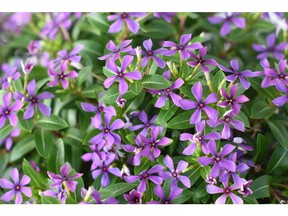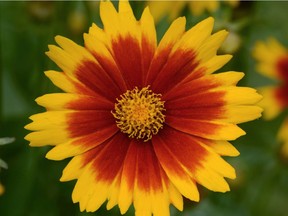Opinion: Our gardens need to be far more diverse, more sensitive to the needs of wildlife and people, and more environmentally friendly.

Reviews and recommendations are unbiased and products are independently selected. Postmedia may earn an affiliate commission from purchases made through links on this page.
Article content
At the start of a new gardening year, before we begin digging and planting, it’s often wise to do a little rethink. I had the opportunity to visit a wonderful old garden a few weeks ago, but, as nice as it was, it needed a refresh to be more relevant in today’s world. I think this is the case for many of us.
Advertisement 2
Article content
Modern gardens need to reflect our new reality. First and foremost, gardens should make an environmental statement. Our collection of plants should sequester carbon, produce oxygen, help neutralize pollutants and be more heat, drought and moisture tolerant. Our soils must be rich with organics and naturally regenerative.
Today’s gardens need to be far more wildlife friendly and offer as much natural habitat as possible. By incorporating more native plants and other species that provide shelter, food and nesting material, we’ll enjoy a greater wealth of birds. Hummingbirds need special attention and late winter red flowering currants, mahonias, summer fuchsias and cupheas are all great resources for them. Butterflies love buddleias and milkweed. Bees and other pollinators like a continuous flow of pollen and nectar, which many recently introduced, longer-blooming perennial plants produce in abundance. The new Milly Rock series of achilleas, Little Adder agastache, Uptick coreopsis, Diva lavender, Whispurr nepeta and Marvel salvias all bloom over a significantly longer period, providing much-needed pollen power.
Advertisement 3
Article content
Having new perennials in our gardens, ones that bloom for extended periods of time, makes such a huge difference in our level of enjoyment and are welcome food sources for wildlife. Perennials that act-like-annuals also add a more continuous flow of colour.

I’ll always remember a conversation I had with Adrian Bloom. His famous Foggy Bottom perennial garden in England was absolutely magnificent. He said to me, “I suppose you have to use annuals in your garden.”
I explained in a very nice way that, although annuals have a different role to play in a garden than perennials, they are still an important element. I’m not sure I convinced Bloom, but annuals really are essential in a modern garden to provide dramatic, long lasting, vibrant colour. The most interesting development is that we now have new types of annuals that are mimicking perennials.
Advertisement 4
Article content
Take salvias, for example. Many new varieties look like perennials, attract pollinators and bloom non-stop. A new series, called Hummingbird, comes in coral, white and red, and blooms from late April until frost. Numerous varieties of new blue salvias look magnificent as backdrops for yellow marigolds or compact, annual Toto rudbeckias. Pollinators, especially bees, love them.
Where would any garden be without sunflowers, the happiest flowers on earth? New varieties, like Sunfinity, bloom all summer. Snapdragons, massive displays of Easy Wave petunias, wax begonias, white marigolds, zinnias and shade-loving impatiens are annuals that all make an important contribution.

With today’s Dragon’s Breath celosias, yellow foliaged Canary Wing begonias, fragrant Nicotiana sylvestris, and perfumed stocks and heliotrope, I can confidently say that we’ve never had such an exciting and diverse range of annuals. New portulacas, Vinca major and Profusion zinnias, are some of the most heat and drought tolerant plants we have. They will also keep your garden looking vibrant even in wet weather. Catharanthus Soiree is new, totally heat tolerant and is beginning to show up in gardens, especially in warmer parts of Canada. The new Endurance marigold is one of the most heat and drought tolerant varieties there is. When fall turns to winter, violas, winter pansies and ornamental kales keep carrying the colour. So, yes, Adrian, annuals do have a rightful place in our gardens.
Advertisement 5
Article content
Ornamental grasses are also beginning to play an integral part in today’s gardens. What I love most about them is that they come alive in the slightest bit of breeze, adding movement into an otherwise static garden. Heat resistant, drought tolerant and almost maintenance-free, grasses are often the missing link in many gardens, and they’re also a source of nesting material for birds. The evergreen acorus, carex and fescue families, tall miscanthus and Mexican feather grass (Stipa tenuissima), which looks like a bad hair day unless it rains constantly, are terrific grass varieties, and they all add a great deal of character to any garden. Purple fountain grass (Pennisetum setaceum Rubrum), which we treat as an annual in our climate, is the most popular grass of all and is used most effectively as an anchor in container gardens.
Advertisement 6
Article content
In modern gardens, we tend to forget our wonderful conifers. In smaller spaces, tall, thin, beautiful Picea omorika Bruns and narrow Picea Cupressina will add vertical interest, and golden spruces, like Picea Skylands, and golden pines, like Pinus strobus Louie, are breathtaking. Japanese maples are four season wonders, and with literally hundreds of varieties available, no garden should be without at least one. Their fall colours are truly exceptional.
As we experience more hot summer weather, a shade tree, strategically placed in the right location, will provide relief from the heat, both inside our homes and in our gardens. New varieties of shade trees, once established, have greater heat and drought tolerance, and many, like Acer rubrum, have spectacular fall colours.
With the realities of today’s gardening environment, our gardens need to be far more diverse, more sensitive to the needs of wildlife and people, and more environmentally friendly. All our gardens will benefit greatly from a reassessment of their role in this day-and-age.











